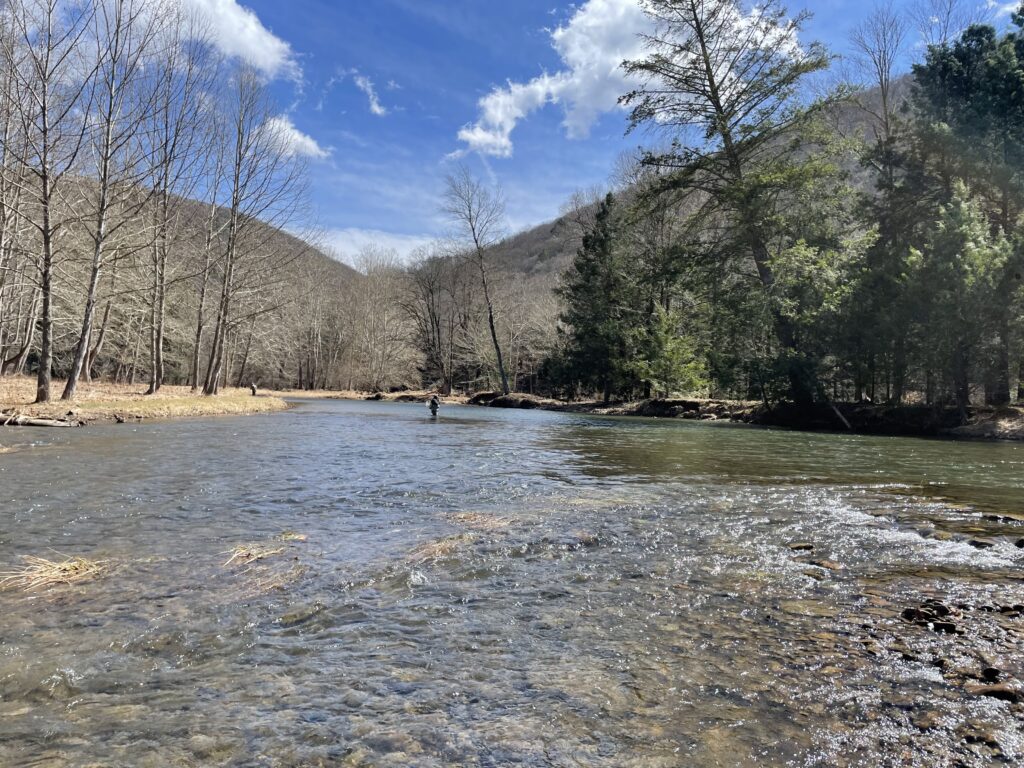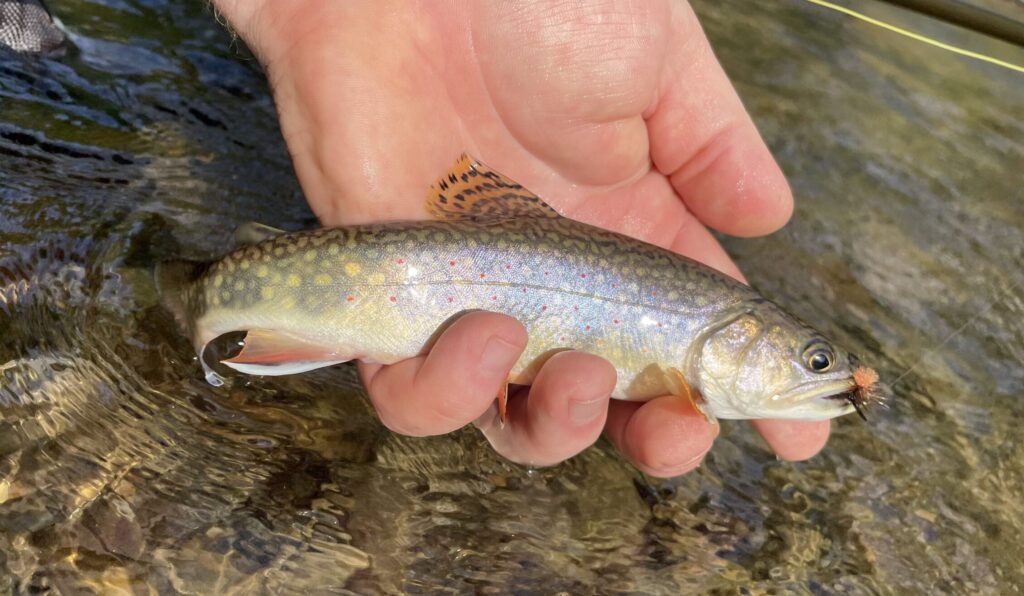The Well Stocked Fly Box for the Big 4 Trout Streams in North Central Pennsylvania

The Big 4 are the four large freestone rivers in north-central Pennsylvania. Their watersheds cover over 2,800 square miles. Pine Creek is the largest watershed and, with its tributaries, the easternmost watershed. Kettle Creek and Young Womans Creek comprise the center section. Sinnemahoning Creek is comprised of three major tributaries. First Fork flows north to south in the eastern edge of the watershed. Driftwood Branch flows west to east in the center of the Sinnemahoning watershed. The acid mine drainage polluted Bennett Branch flows from the southwest to northeast.
Those are the four rivers: Pine, Kettle, First Fork and Driftwood. Young Womans Creek is included with Kettle Creek because its geographic location between Pine Creek and Kettle Creek lends itself to similar fishing as the big rivers though on a reduced scale. There are also many notable small streams that might be mentioned. To protect the innocent – and the brook trout from being trampled to death – I won’t mention them. Those of you who have fished the region know which streams they are.
The Bennett Branch is a sleeping giant. Recent reclamation efforts have taken place on the Bennett Branch tributaries, and its aquatic life is returning. Of the three tributaries to Sinnemahoning Creek (Bennett, Driftwood and First Fork) all carry about the same water. The flow is roughly between 300-400 cfs during May. Kettle Creek also carries 300-400 cfs at its mouth during May. Pine Creek at Waterville is big water flowing 1000-1200 cfs during normal May conditions.
For hatches of insects, the spectrum is covered. Blue Quills, Quill Gordons, Hendricksons, Grey Foxes, Ginger Quills, March Browns, Sulphurs, Green Drakes, Blue Winged Olives, myriad Caddis, various stoneflies, and midges are all abundant. Some hatches are on more streams than others, and more on some streams than others. Local variations of fly patterns persist and the angler would do well to spend some time and maybe a few coins in the local tackle store or watering hole to learn these local variations.
When asked to develop a list of what flies the angler should carry on the big streams of the Pennsylvania Wilds, I sat down and drew up a list of 29 patterns of dry flies, 15 wet flies, and 10 streamers. Added to this, I threw in a bunch of terrestrials and poly wing spinners, Compara-duns, and spinners, and before too long I had a list that most fly shops don’t carry. I decided to pick the flies that have produced the most consistently for me. This list is sure to draw controversy and suggested changes from anyone who has fished the water in that area. These are my top producers in the Kettle Creek Valley and the smaller streams that feed it or are nearby. In the magic embrace of the “Big 4” these flies will consistently produce fish regardless of the water type or size.

"Must Have" Flies for North Central PA's Big 4 Streams
Please Note: This is not a comprehensive list of hatches found on northcentral PA streams. Rather, these patterns can be used for multiple purposes to match any hatches you may encounter, as the author indicates in the section on tying suggestions.
Favorite Dry Flies:
Adams – sizes 10-20
Yellow Adams – sizes 10-20
Light Cahill – sizes 12-20
Red Quill – sizes 12-18
Elk Hair Caddis – sizes 12-16
Favorite Wet Flies:
Picket Pin – sizes 8-14
Grey Hackle Peacock – sizes 10-16
Cahill Wet Fly – sizes 10-16
Leadwing Coachman – sizes 10-16
Favorite Streamers:
Woolly Bugger – sizes 2-12
Clouser Minnows – sizes 2-10
Muddler Minnow – sizes 4-12
White Marabou – sizes 2-12
Favorite Nymphs:
Gold-Ribbed Hare’s Ear – sizes 8-18
Prince Nymph – sizes 12-18
Favorite Terrestrials:
Black Parachute Ant 12 – 18
Tying Suggestions
I would recommend the dry flies be tied in the traditional Catskill manner. The Adams and Yellow Adams should be tied in the traditional manner and not the parachute that has been popular recently. The body of the Yellow Adams should tend toward the orange side of the spectrum rather than the pale or greenish yellows. The only exception to this might be the larger size 10 flies, where the color might be the yellow with a hint of green for the Green Drakes. The Light Cahill should use cream body material and hackle of the same color. Wood duck is the preferred wing material but dyed mallard is acceptable. The Red Quill can be tied with either paired mallard wings or hackle points or gray poly yarn. The quill body should be from a natural brown or dark tan saddle hackle. Dyed necks tend to have light quills when stripped of the barbs.
The wet flies should all be tied in the traditional manner. The Grey Hackle should have a body color similar to the Yellow Adams. The Cahill, sometimes called the Dark Cahill, should be tied with a medium brown or dark tan body. The rolled wood duck or dyed mallard wing is what seems to make this fly so attractive. For the Pickett Pin and the Leadwing Coachman, look for peacock herl with an amber sheen. Also, for the Pickett Pin tie a few with red squirrel or fox squirrel for the wing.
The Woolly Bugger should be the traditional tie. Usually lead eyes, bead heads or cone heads are not necessary. Tie an olive body, gray or olive tail and grizzly hackle. The Clouser Minnow works best in brown and white with either a silver or pearlescent stripe. A stripe of black flashabou may be substituted in place of the pearlescent or silver. The Muddler and the White Marabou streamers should be tied in the traditional manner. They should not be over dressed. A greased Muddler in the smaller sizes will also double as a hopper imitation.
The Gold Ribbed Hares Ear Nymph should be the traditional tie. Large to small sizes imitate almost everything almost. The Black Parachute Ant should be tied with a small white or yellow post and black hackle. Large to small sizes produce all year.The patterns listed above will generally cover the spectrum and meet most fishing needs. In the event they don’t I would suggest minnows or nightcrawlers when the water is high and grasshoppers and crickets as the water warms in the summer.
Have a fly fishing question you’d like answered? Drop us a line at info@darkskskiesflyfishing.com! If we use your question in a blog post or in the newsletter, we’ll send you a FREE fly box with a dozen of our favorite nymphs and dry flies!
